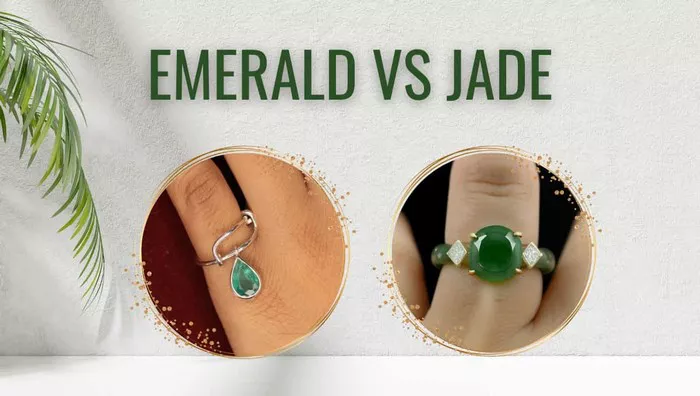Jade and emerald are often subjects of confusion due to their somewhat similar appearances, but they are distinct gemstones with unique compositions, colors, cultural significances, and market values. Understanding these differences is essential for anyone interested in gemology, jewelry, or cultural history.
What is Jade?
Jade is an umbrella term encompassing two different minerals: jadeite and nephrite. Jadeite is the rarer and more valuable of the two, while nephrite is more common. Both minerals have been prized for millennia, particularly in East Asian and Mesoamerican cultures, where they hold profound cultural and spiritual significance.
Characteristics of Jade:
Composition: Jadeite is a sodium and aluminum-rich pyroxene mineral, while nephrite is a calcium and magnesium-rich amphibole mineral. Despite their different compositions, both are classified as jade.
Color: Jade comes in a wide range of colors, including shades of green, white, lavender, yellow, and black. The most prized color is an intense green known as “Imperial Jade.”
See Also: Can I Wear Diamond with Yellow Sapphire?
Cultural Significance: Jade has deep cultural roots in Chinese, Mayan, and Maori cultures, symbolizing purity, wisdom, harmony, and even immortality. It has been used for ceremonial objects, jewelry, and decorative art for thousands of years.
Value: The value of jade varies significantly based on its color, transparency, texture, and cultural history. Fine-quality jadeite, especially Imperial Jade, can command prices that rival or exceed those of diamonds and other precious gemstones.
What is Emerald?
Emerald is a green variety of the mineral beryl, colored by trace amounts of chromium and sometimes vanadium. It is known for its vivid green color, which ranges from light to deep shades, often described as “emerald green.” Emeralds have been treasured since ancient times for their lush color and have held significant cultural and historical importance.
Characteristics of Emerald:
Composition: Emerald belongs to the beryl mineral family, which also includes other varieties like aquamarine and morganite. Its green color is due to the presence of chromium and sometimes vanadium.
Color: The finest emeralds exhibit a pure green hue with excellent transparency and a deep, intense color. The color saturation and clarity greatly influence an emerald’s value.
Cultural Significance: Throughout history, emeralds have symbolized rebirth, hope, and eternal youth. They were prized by ancient civilizations such as the Egyptians, who associated them with fertility and resurrection.
Value: Fine-quality emeralds are among the most valuable gemstones, especially those with a vibrant green color, high clarity, and few inclusions. Colombian emeralds are particularly renowned for their rich color and transparency.
Key Differences Between Jade and Emerald:
1. Composition: Jadeite and nephrite are mineralogically distinct from beryl, the mineral that forms emerald. Jadeite is a pyroxene mineral, while nephrite is an amphibole mineral. Emerald, on the other hand, is a specific variety of beryl.
2. Color: While both jade and emerald are green gemstones, jade exhibits a broader range of colors, including greens, whites, lavenders, yellows, and blacks. Emeralds are exclusively green, varying from light to deep, intense hues.
3. Cultural Significance: Jade holds deep cultural and spiritual significance in East Asian and Mesoamerican cultures, often symbolizing virtues like wisdom, purity, and harmony. Emeralds have a rich historical and cultural background, associated with royalty, fertility, and hope in various ancient civilizations.
4. Market Value: The value of jade is determined by factors such as color, translucency, texture, and cultural provenance. Jadeite, especially Imperial Jade, can be extremely valuable. Emeralds are valued for their color intensity, clarity, and transparency, with fine-quality stones fetching high prices in the gemstone market.
Conclusion
In summary, while jade and emerald share a green color and are both esteemed gemstones with rich cultural histories, they are fundamentally different in composition, color range, cultural significance, and market value. Jade, encompassing jadeite and nephrite, holds deep cultural roots in East Asia and Mesoamerica, symbolizing purity, wisdom, and immortality. Emerald, a variety of beryl, is prized for its vivid green coloration due to chromium impurities and has been revered throughout history for its beauty and symbolism of rebirth and fertility. Understanding these distinctions enhances appreciation for these remarkable gemstones and their roles in art, culture, and personal adornment worldwide.

